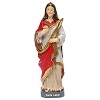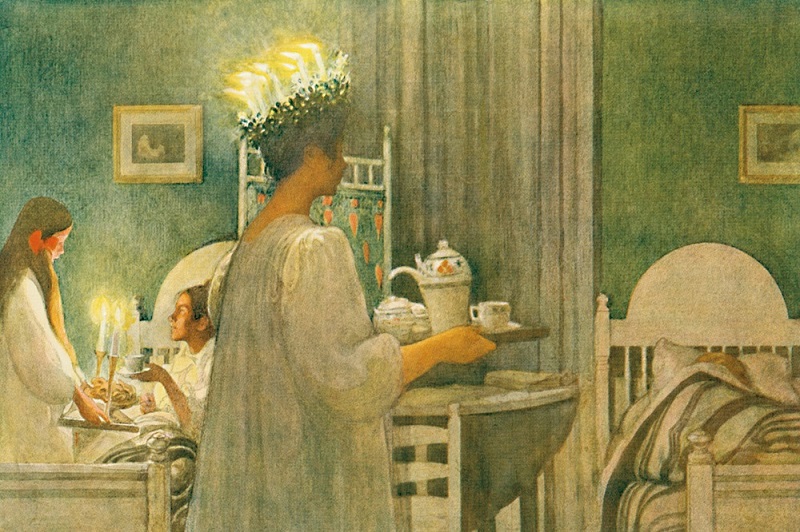On 13 December, Saint Lucia’s Day, the light of Christmas is anticipated by a few days. Who is this Saint, part of the tradition of many areas of Italy?
At this time of year, the signs of Christmas are getting stronger and stronger. The days shorten, the nights lengthen, the children become more and more enthusiastic and parents begin to ask themselves: what to give for Saint Lucia? In fact, Santa Claus and the Befana are not the only ones able to bring gifts for good children after a magical night.

The story of Saint Lucia
From the sources that speak of Santa Lucia, it is clear that the Saint was of Sicilian origin, from the area of Syracuse – the city of which she is the patron saint. Although numerous details of her life remain smoky, Saint Lucia is remembered as a virgin martyr of the first centuries after Christ. It is said that he cared for the poorest in the catacombs and used his noble family’s wealth to help the needy. In one of the stories that tradition has given us, the Saint of Light uses her hands in service to others, and places on her head a chaplet with candles, a symbol that we see in some depictions of Lucia.
Put on trial as a Christian under the persecution of Diocletian – denounced perhaps by the promised groom offended by the vow of consecration that the saint had made – Saint Lucia suffered the fate of many martyrs of the time.

Holy Martyrs: sacrificing one’s life in the name of God
The Holy Martyrs are men and women, often very young, who sacrificed their lives for the love of God, and for this reason, they deserved beatification. So let’s get to know them better.
The trial and the tortures that the virgin had to face have generated several anecdotes. Tradition has it that the young woman’s body became inexplicably heavy when her executioners tried to move it by force. The flames of the fire that was to burn her did not touch her and the sword – or spear – with which she was pierced through her throat did not prevent her from proclaiming her Faith and receiving Communion. One of the most famous episodes, easily more legendary than real, is the one according to which her eyes were torn out: Lucia, the saint of Light, is therefore considered the protector of the blind.

Festival of Saint Lucia
There is a saying that says “Saint Lucia, the longest night there is”: in the past, it was truer than now, because the day of Santa Lucia, 13 December, before the reform of the Gregorian calendar coincided with the winter solstice.
Saint Lucia is a figure dear to many families and children, especially in northern Italy, where several cities remember her as the Saint who brings gifts and sweets to homes on the night between 12 and 13 December. She left candy and gifts for all the good children on her donkey. She leaves sweet coal for the less good children, or, for those who try to stay awake to see her, she throws ashes in their eyes.

Saint Lucia is also much loved in the countries of northern Europe: in various regions of the Scandinavian peninsula, it is celebrated with processions, processions and songs. In particular, in Sweden, according to tradition, the eldest daughter dresses as Saint Lucia, with a crown of candles, and brings breakfast to her parents.





















